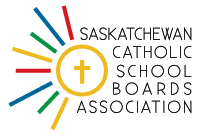Saskatchewan Catholic School Boards Association Resource
Introduction: Permeation is as simple as A-B-C-D The purpose of permeation is to make our faith part of every lesson we teach. It is the sharing of our core religious values with our students. We look for authentic ways to share our faith.
- A. Amen: Why we pray and the power of prayer
- B. Believe: What we believe (statements of our faith, creed)
- C. Celebrate: How we celebrate (sacraments, liturgical year events)
- D. Do: What we do and how we live (morals and values)
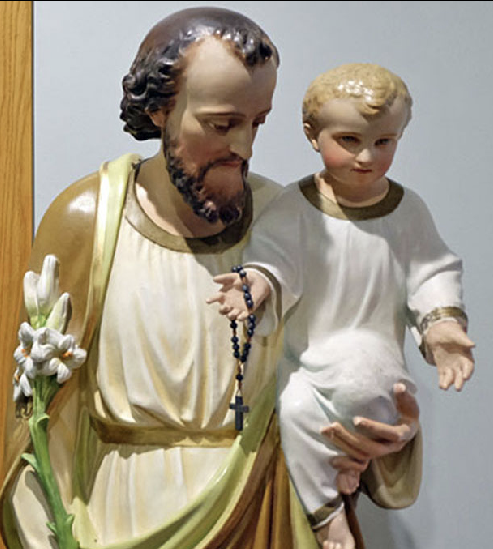
A. Amen: Why We Pray and the Power of Prayer
A.1 DAILY PRAYERS AND INTENTIONS
- Begin each class/period of the day with prayer!
- What would I pray for in…
- History/Social Studies?
- Pray for specific countries involved in conflicts; pray for politicians, governments, civic leaders; pray for fruitful negotiations to end conflicts, etc.
- Science? Pray for the discovery of a cure for a specific disease; pray for a vaccine against Ebola; pray for ethical research practices; pray for breakthroughs in scientific research, etc.
- Math? Pray for those who have limited access to resources (that we might better divide and share what we have); pray for countries or people with unmanageable debt loads (e.g. those parents in Third World Countries forced to sell their children into slavery because of unpaid debts), etc.
- Phys Ed? Pray for those who have been injured; pray for strength to show good sportsmanship; pray that international sporting events might bring countries and cultures together.
- Ask for intentions/petitions from the students.
- Students can compose their own prayers (fits especially well in Language Arts!)
- What would I pray for in…
- Teach traditional catholic prayers https://www.loyolapress.com/catholic-resources/prayer/traditional-catholic-prayers/
- Loyola Press’s “Three Minute Retreat” is a great way to start a class. There’s a new one every day, complete with Bible passage and contemplation questions. https://www.loyolapress.com/3-minute-retreats-daily-online-prayer/
- Create a dedicated prayer corner or sacred space in your room
- What goes in it? Some suggestions:
- Prayer cloth in the colour of the liturgical season (Purple for Advent and Lent, Green for Ordinary Time, White for Christmas/Easter)
- Bible, Rosary, Candles, Crucifix, Icons or pictures of your class’s patron saint, Picture or statue of the Holy Family
- What goes in it? Some suggestions:
- Share stories about the power of prayer. This could come from many sources.
- Follow the liturgical seasons.
- Liturgical Seasons (e.g. indicate Sundays of Advent, Lent, Easter, Ordinary Time)
- Feast days (e.g. The Annunciation, March 25), Holy Days of Obligation
- Culturally significant feast days – great for Social Studies! (e.g. St. Patrick’s Day, March 17; St. Jean Baptiste Day June 24)
- The Canadian Conference of Catholic Bishops has a liturgical calendar on their website with helpful information: http://nlo.cccb.ca/index.php/liturgical-calendar
- More saints info: https://www.franciscanmedia.org/sod-calendar/
- Explore the Mass and celebrations ( “Lex orandi, lex credendi” – the Latin term which means what we pray is what we believe).
- Examine parts of the Mass:
- Introductory Rites – includes the Opening Prayer, Penitential Rite and the Gloria
- Liturgy of the Word – includes the Readings, Gospel, Homily and Prayers of the Faithful
- Liturgy of the Eucharist – includes the Eucharist Prayer, the Our Father and Holy Communion
- Concluding Rites – includes the Concluding Prayer and Dismissal
- https://www.smp.org/resourcecenter/category/Mass/4/?per_page=all
- Examine parts of the Mass:
A.2 PRAYER CORNER OR SACRED SPACE
- Create a dedicated spot in your room
- What goes in it? Some suggestions:
- Table cover (cloth, dollar store plastic tablecloth, paper, etc.) in the colour of the liturgical season (Purple for Advent and Lent, Green for Ordinary Time, White for Easter, Red for Pentecost, etc.)
- Rosary, Crucifix
- Icons or pictures of your class’s patron saint
- Picture or statue of the Holy Family
- Bible
- Candles (including Advent Wreath)
B. Believe: What We Believe
1. THE CREED: WHAT WE BELIEVE
The core beliefs of our faith are found in:
- Scripture such as:
- The ten commandments,
- The beatitudes,
- Parables,
- Teachings in gospels, and
- The Letters of Paul.
- Traditions, as guided by the Holy Spirit, are passed on from the apostles to our Church (the ‘living tradition’ of the Church guided by the Church’s Magisterium). For example, Example: Assumption of Mary.
- The Creed is a statement of our faith: Apostles Creed or Nicene Creed https://www.vatican.va/archive/ccc_css/archive/catechism/credo.htm
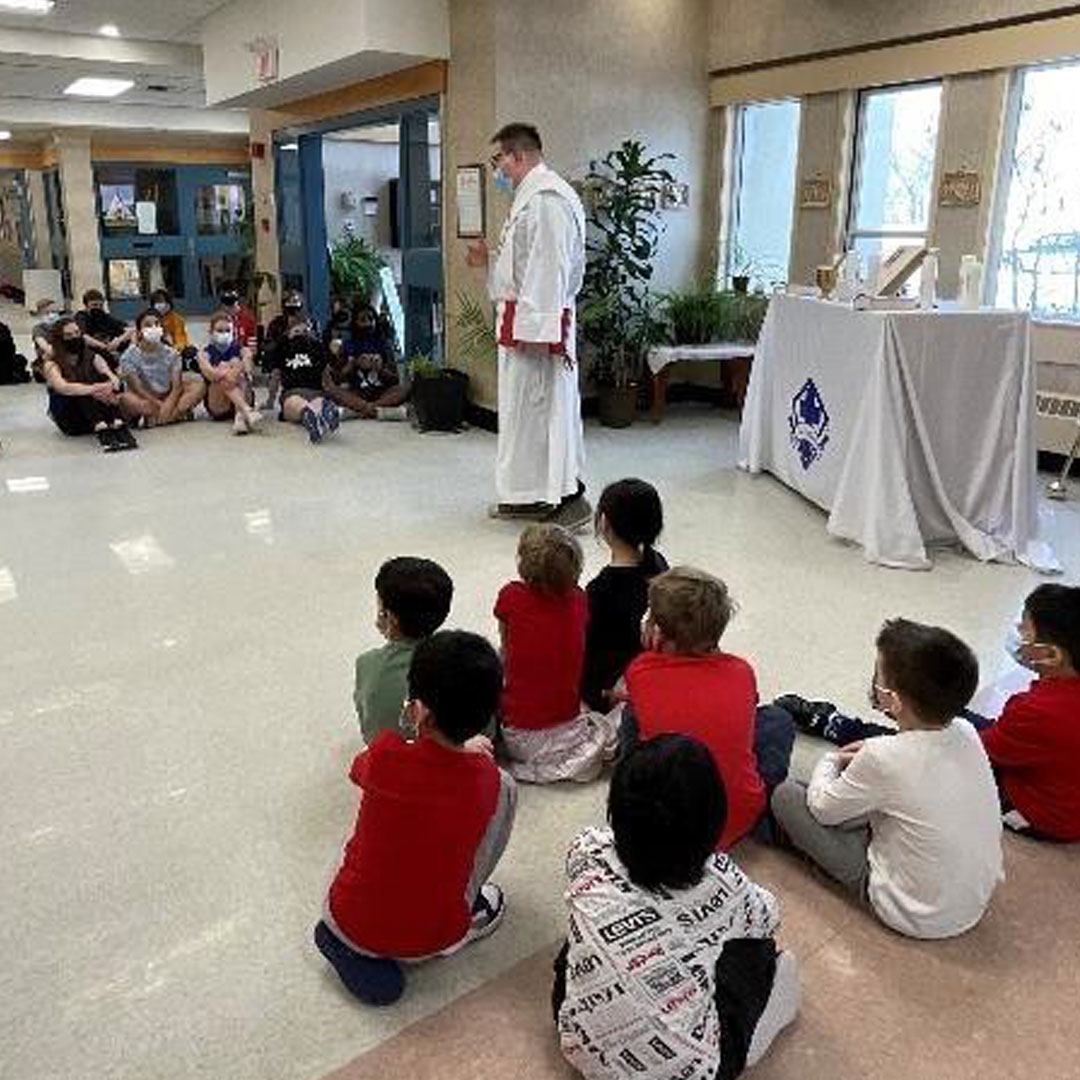
|
The Apostles Creed |
The Nicene Creed |
|
I believe in God, |
We believe in one God, the Father, the Almighty, |
|
I believe in Jesus Christ, his only Son, our Lord. |
We believe in one Lord, Jesus Christ, the only Son of God, |
|
He was conceived by the power of the Holy Spirit |
by the power of the Holy Spirit he was born of the Virgin Mary, |
|
He suffered under Pontius Pilate, was crucified, died, and was buried. |
For our sake he was crucified under Pontius Pilate; |
|
On the third day he rose again. |
On the third day he rose again |
|
He ascended into heaven |
he ascended into heaven |
|
I believe in the Holy Spirit, the holy catholic Church, the communion of saints, the forgiveness of sins, Amen. |
We believe in the Holy Spirit, the Lord, the giver of life, who proceeds from the Father and the Son. Amen. |
B2. SAINTS:
-
Choose a patron saint for your classroom or subject area (for example, St. Genesius is the patron saint of actors; St. Luke is the patron saint of artists; St. Albert the Great is the patron saint of scientists)
-
Need to find a patron saint, or find out what causes are ascribed to a particular saint?
B3. CATHECHISM:
The Catechism of the Catholic Church contains a full description of the tenets of Catholicism.
C. Celebrate: How Do We Celebrate?
1. SACRAMENTS:
The sacraments involve faith in big life moments. Celebrations of the sacraments are signs of Jesus’ presence in our lives and a means for receiving His grace.
-
The Church celebrates seven sacraments, which can be divided into three categories.
-
Sacraments of Initiation
- Baptism
- Confirmation
- Eucharist
- Sacraments of Healing
- Reconciliation
- Anointing of the Sick
-
Sacraments at the Service of Communion
-
Matrimony
- Holy Orders
-
-
FIND REASONS TO CELEBRATE!
- Celebrate the feast day of your class’s patron saint! Have a party! Bring treats! (Why not a parade on the feast of St. Cecilia, the patroness of musicians?!)
- “Bethlehem” means “house of bread” – why not have a bannock/bread day in the school? (Last long 360 of January, just before exams?)
- We’re really good at celebrating Christmas, but what about Easter? Have a class potluck!
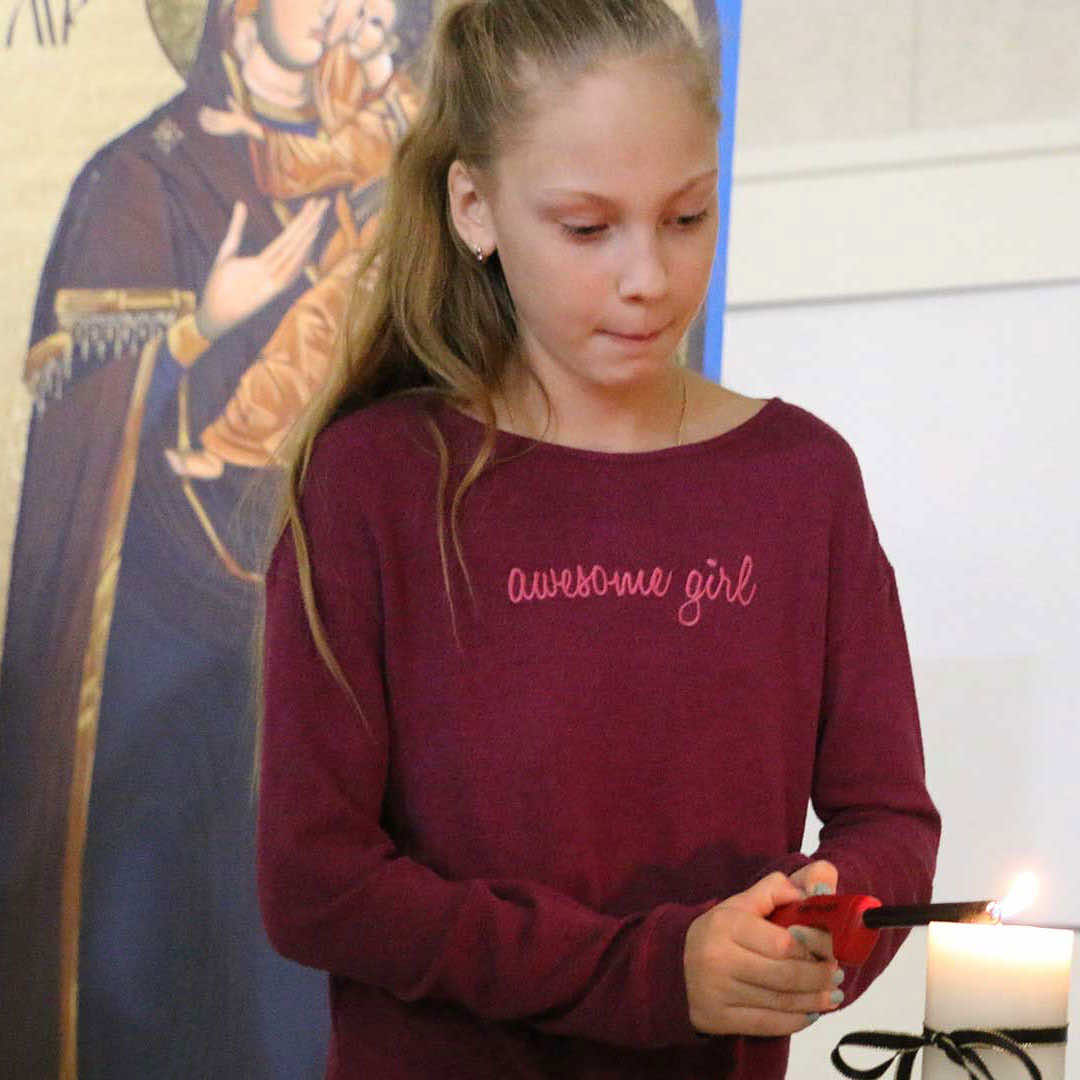
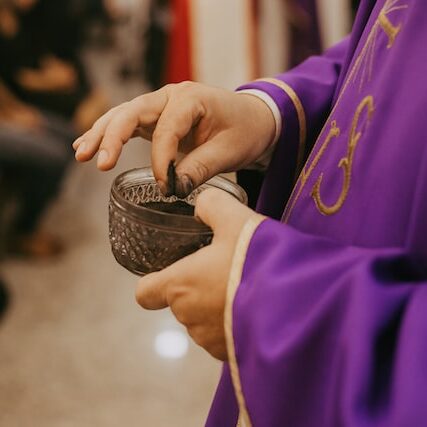
D. Do: Catholic Morals and Values
D. 1 EMBRACE DIGNITY
As Catholics we embrace the dignity of the person, from conception to natural death. All people are created in the Image of God.
@. 2 MORALS AND VALUES
More information about Catholic Social Teachings is available at https://www.crs.org/resource- center/CST-101 (information below gleamed from this website).
-
Life and Dignity of the Human Person
-
The Catholic Church proclaims that human life is sacred and that the dignity of the human person is the foundation of a moral vision for society.
-
- Call to Family, Community, and Participation
- The person is not only sacred but also social. How we organize our society — in economics and politics, in law and policy — directly affects human dignity and the capacity of individuals to grow in community. Marriage and the family are the central social institutions that must be supported and strengthened.
- Rights and Responsibilities
- The Catholic tradition teaches that human dignity can be protected and a healthy community can be achieved only if human rights are protected and responsibilities are met.
- Option for the Poor and Vulnerable
- A basic moral test is how our most vulnerable members are faring….remember the needs of the poor and vulnerable.
- The Dignity of Work and the Rights of Workers
- The economy must serve people, not the other way around. Work is more than a way to make a living; it is a form of continuing participation in Gods creation. If the dignity of work is to be protected, then the basic rights of workers must be respected.
- Solidarity
- We are one human family whatever our national, racial, ethnic, economic, and ideological differences. We are our brothers and sisters keepers, wherever they may be. Loving our neighbor has global dimensions in a shrinking world. At the core of the virtue of solidarity is the pursuit of justice and peace.
- Care for God’s Creation
- We show our respect for the Creator by our stewardship of creation. Care for the earth is not just an Earth Day slogan, it is a requirement of our faith.
Ten Commandments https://www.loyolapress.com/catholic-resources/scripture-and- tradition/catholic-basics/catholic-beliefs-and-practices/the-ten-commandments/
The Seven Deadly Sins http://www.dummies.com/how-to/content/the-seven-deadly-sins-of-the- catholic-church.html
The Seven Cardinal Virtues http://www.dummies.com/how-to/content/cardinal-virtues-of-the- catholic-church.html
Fruits of the Holy Spirit https://www.loyolapress.com/catholic-resources/scripture-and- tradition/catholic-basics/catholic-beliefs-and-practices/fruits-of-the-holy-spirit/
Gifts of the Holy Spirit https://www.loyolapress.com/catholic-resources/scripture-and- tradition/catholic-basics/catholic-beliefs-and-practices/gifts-of-the-holy-spirit/
E. Other General Suggestions for Faith Permeation
E.1 CALENDARS
On your classroom wall calendar
Liturgical Seasons
(e.g. indicate Sundays of Advent, Lent, Easter, Ordinary Time)
Feast days
(e.g. The Annunciation, March 25), Holy Days of Obligation
Saint of the Day
(e.g. Sts. Peter and Paul, June 29)
Culturally significant feast days – great for Social Studies!
(e.g. St. Patrick’s Day, March 17; St. Jean Baptiste Day [called “la fête nationale” in Québec] June 24)
-
Ask the SRC to put feast days on the big calendar in the hallway.
-
Sites for calendar information:
-
The Canadian Conference of Catholic Bishops has a liturgical calendar on their website with helpful information: http://nlo.cccb.ca/index.php/liturgical-calendar
-
www.catholicculture.org has a very thorough calendar for feast days (each one hyperlinked to information/synopsis of the day!), as well as overview and highlights for each month, prayers, activities, etc. (look under drop down menu “liturgical year” for a monthly calendar or a monthly overview
-
Saints of the Day: https://www.franciscanmedia.org/sod-calendar/
-
http://lightfortheday.com/ has a bible verse and a calendar style picture that can be put up on your smartboard as students enter the room.
-
E.2 INSPIRATIONAL QUOTES OR BIBLE PASSAGES
Post a quote of the day/week:
-
Common English Bible (CEB), Contemporary English Version (CEV), and Good News Translation (GNT) are popular versions with adolescents; the New Revised Standard Version (NRSV) is the translation officially used by the Catholic Church in Canada
-
https://www.biblegateway.com/newsletters/ (scroll down the page to find the spot to subscribe). Sign up for a bible verse that is sent to your inbox every day, in whatever bible translation you prefer.
-
http://biblegateway.com/ also has a keyword search feature.
-
http://lightfortheday.com/ has a bible verse and a calendar style picture that can be put up on your smartboard as students enter the room.
-
http://biblehub.com/concordance/ has a keyword search feature.
-
iHope is a free app for iPhone with daily quotes and inspirational messages.
-
Google “Christian Inspirational Quotes” and search the images that come up – perfect for use on smartboards as students come in for the day (many can also be printed off and used as posters!)
E.3 PATRON SAINTS
-
Choose a patron saint for your classroom or subject area (for example, St. Genesius is the patron saint of actors; St. Luke is the patron saint of artists; St. Albert the Great is the patron saint of scientists)
-
Post pictures of your patron saint, or a prayer asking for your patron’s intercession (just Google “prayers to St. ” and you’ll find one!)
-
Need to find a patron saint, or find out what causes are ascribed to a particular saint? Look here: http://www.thesacredheart.com/saintopi.htm
E.3 TEACHING
-
Link Catholic Church teaching to subjects or literature you may be studying in class. For example: which commandments are upheld or broken in the novel or current events?
-
Ten Commandments https://www.loyolapress.com/catholic-resources/scripture-and- tradition/catholic-basics/catholic-beliefs-and-practices/the-ten-commandments/
-
The Seven Deadly Sins http://www.dummies.com/how-to/content/the-seven-deadly-sins-of- the-catholic-church.html
-
The Seven Cardinal Virtues http://www.dummies.com/how-to/content/cardinal-virtues-of-the- catholic-church.html
-
Fruits of the Holy Spirit https://www.loyolapress.com/catholic-resources/scripture-and- tradition/catholic-basics/catholic-beliefs-and-practices/fruits-of-the-holy-spirit/
-
Gifts of the Holy Spirit https://www.loyolapress.com/catholic-resources/scripture-and- tradition/catholic-basics/catholic-beliefs-and-practices/gifts-of-the-holy-spirit/
-
